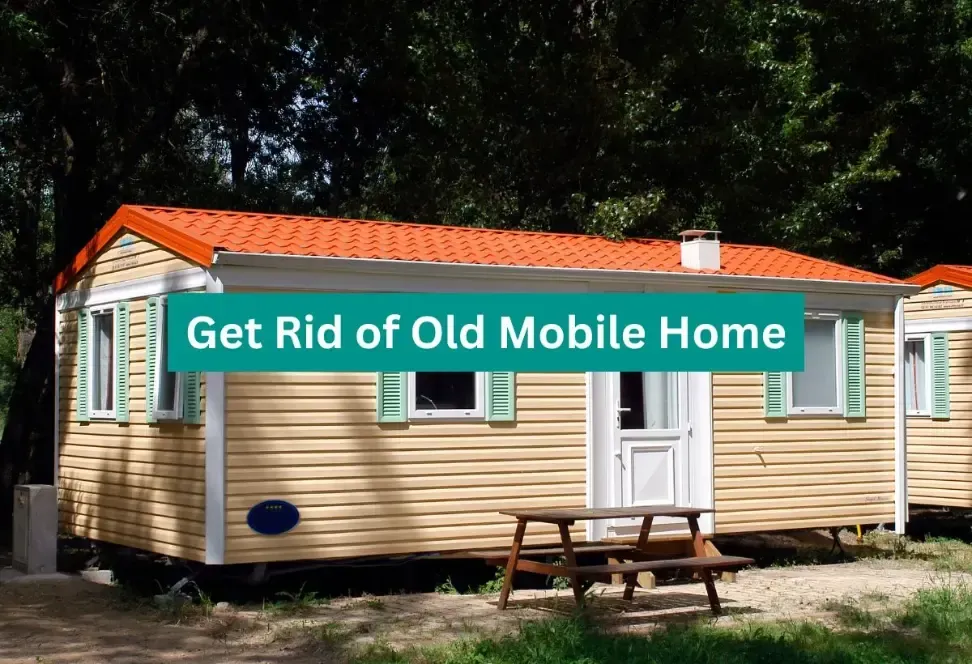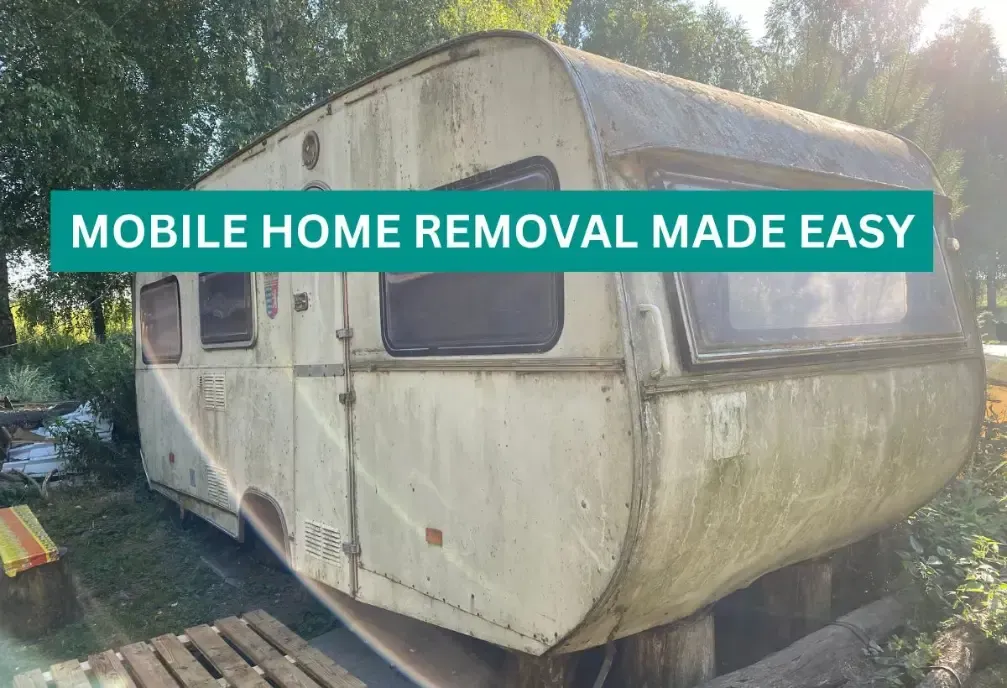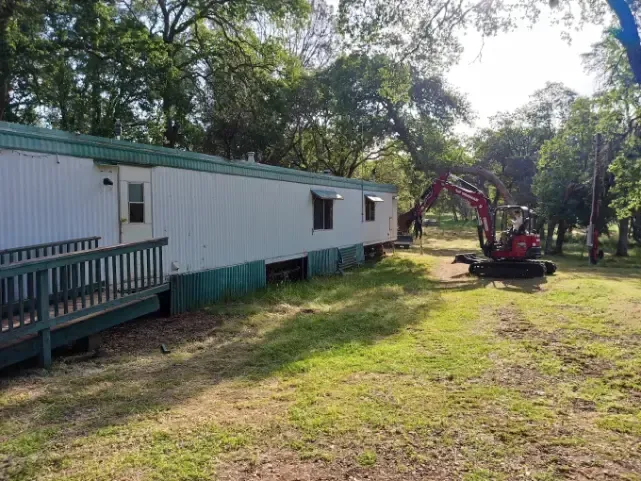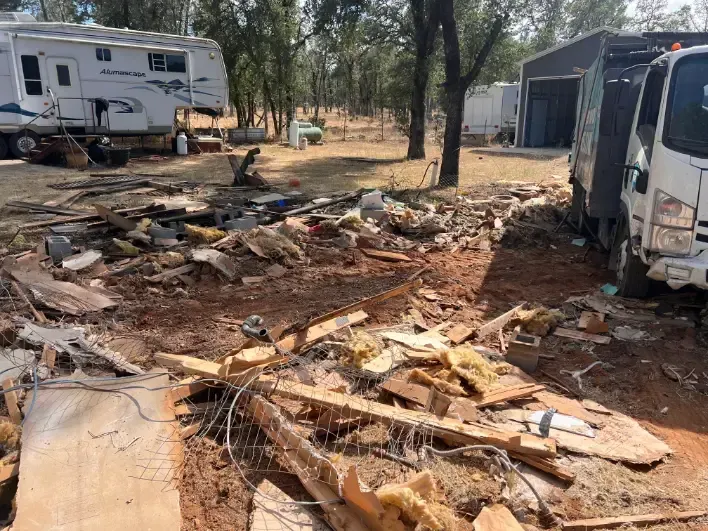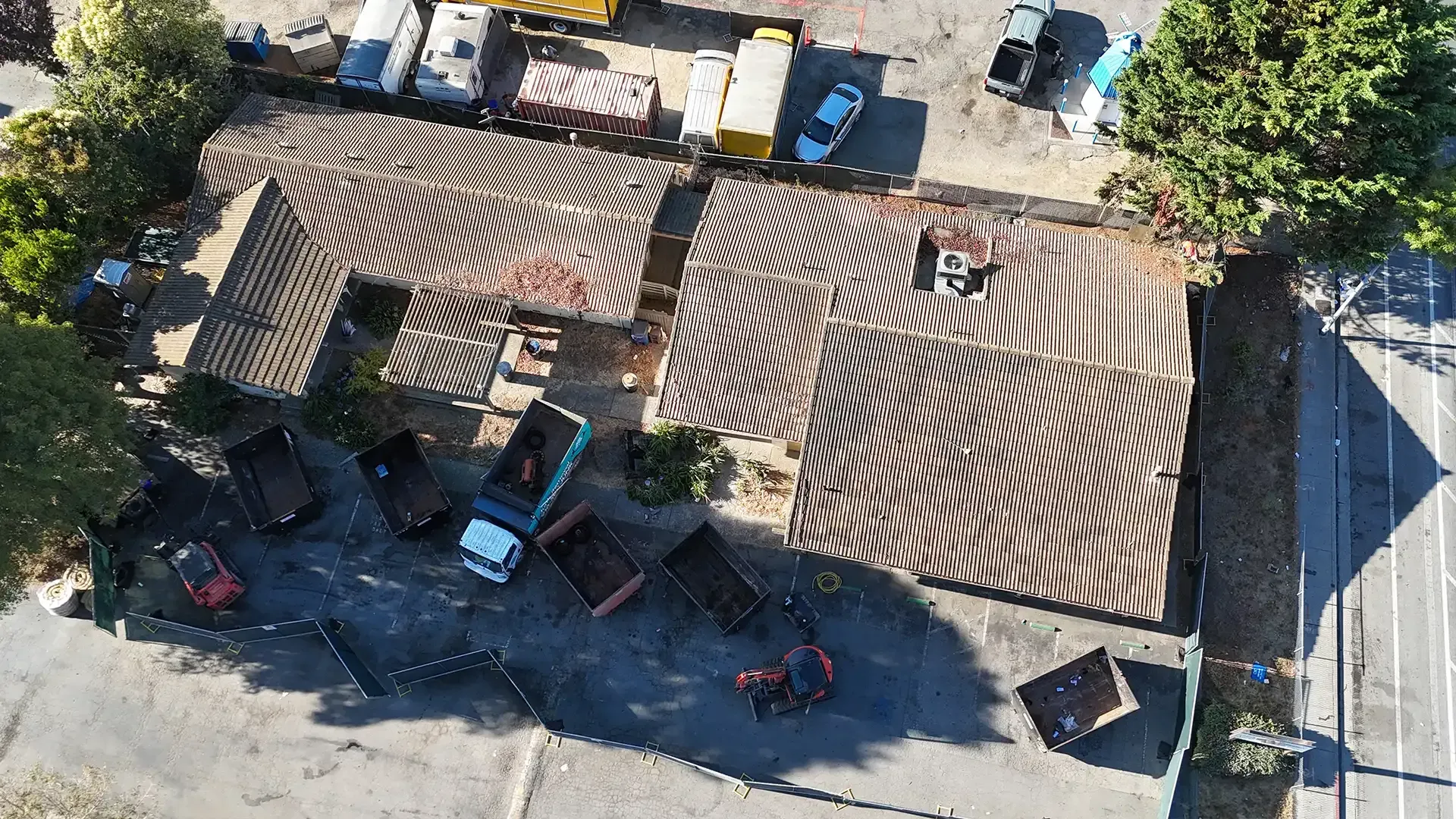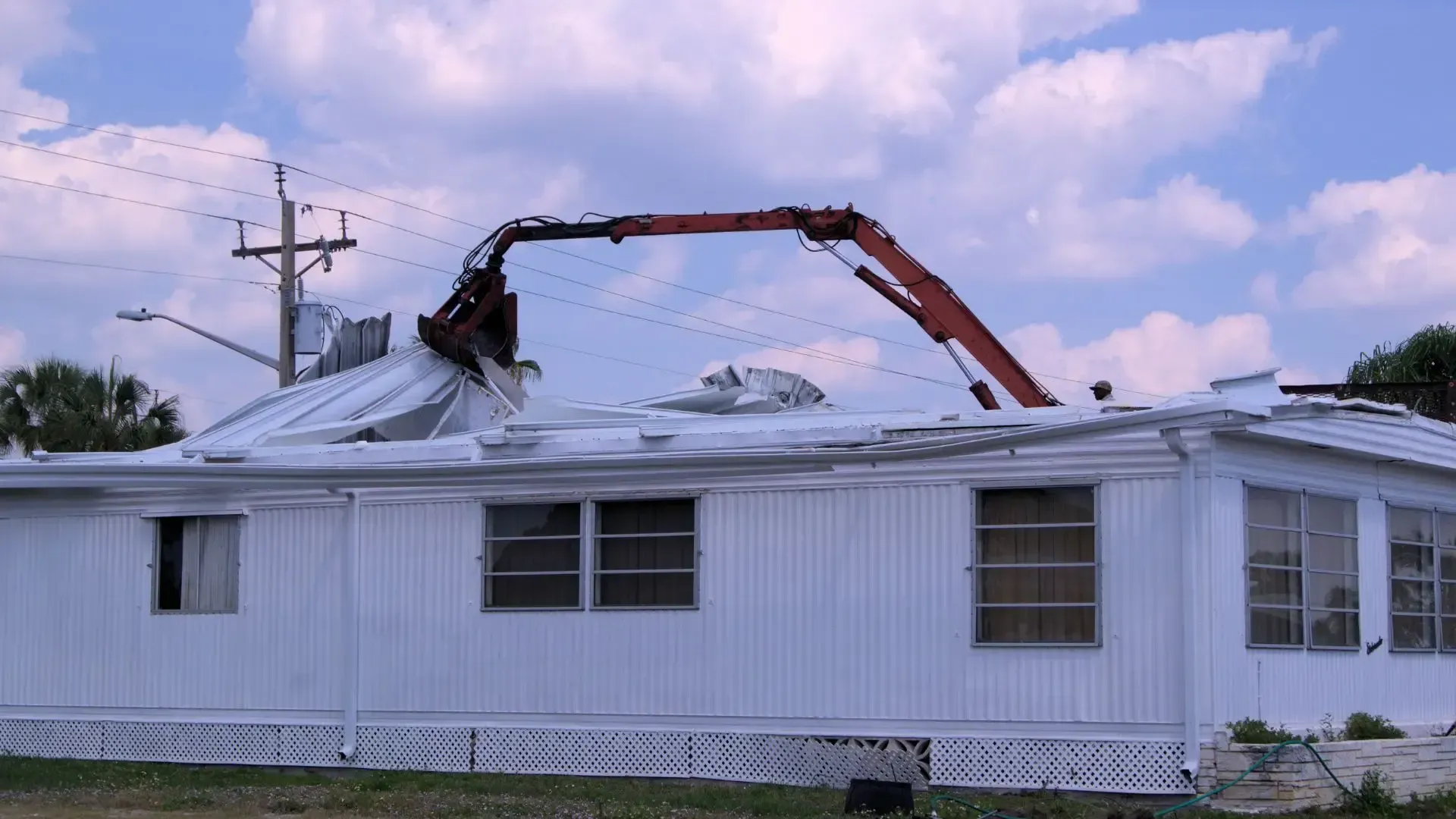What Goes WRONG on Demolition Projects?
You probably always hear from salesman and contractors all the great successful projects they've done. Have you ever heard someone list out all the bad things that could happen? We have made a list of everything we've seen go wrong, and how to properly prepare your project for as many issues as you possibly can. At the end the day, even with perfect planning, things go wrong! It is important to make sure you are flexible just in case. Here are four of the most common issues demolition projects face.
Hidden Utilities can be Damaged
1. Hidden Water Lines Breaking
Issue: Water lines are hit with machines, ran over, and broken causing the line to spray water out and potentially flood an area. This is actually quite common, as water lines are often hidden and not recorded on site maps. Contractors will do their best to avoid any lines, but sometimes they're not visible until after the damage is done. Luckily, water lines are usually very easy to fix. Here are some ways to prevent water lines from breaking.
Comprehensive Site Assessment: Conduct thorough site surveys to identify all utility lines before commencing work. Oftentimes water lines are ran without plans or permits, for sprinkler systems or miscellaneous use around the property. If this is the case contractors will train their operators to be mindful of every area they're digging in, and to stop immediately if a line has revealed itself.
Call Your Utility Company: Engage with local utility providers to obtain accurate information on underground installations. If you live in California, you can actually call 811 and get a map of water, gas, and other important lines and cables running underneath your property. The tech that comes out to help will even mark each utility for you!
Fixing Water Lines: Even if you take all the necessary preventative measures, there is still potential to hit a line, either accidentally or find a line 811 and the homeowner doesn't know about. In this case, it is imperative that the contractor knows where the water shutoff valve is before ever starting work. That way they can stop work immediately, shut off the water, dig out the pipe, and deduce how to repair. Most water lines can be repaired easily with pcp pipe.
2. Demolition Equipment Malfunctions
Issue: Machinery breakdowns can lead to project delays and pose safety risks to workers. Demolition requires the use of massive, heavy duty machines that weigh up to 80,000 pounds and can be used to tear up concrete buildings. Because of the complexity of the equipment, it's not uncommon for something to not work as expected. Ranging from a hose on an excavator being pinched and needing replacement, to a bucket falling off a machine due to a pin snapping off. Here is how to prevent some of these issues from happening.
Regular Maintenance: Adhere to a strict maintenance schedule for all equipment to ensure optimal functionality. Depending on the type of machine and how regularly they're used, a monthly or biweekly schedule is recommend by the manufacturer. Making sure the machines are greased every 25-75 operating hours, cleaned regularly, and fluids replaced.
Operator Training: Ensure operators are properly trained to handle equipment and recognize early signs of malfunction. This one seems obvious, but lots of contractors let new or poorly trained employees run equipment. This could lead to them not realizing an issue is occurring and lead to the problem getting a lot worse. Making sure your operator is certified to run the equipment makes sure they can stop work immediately when an issue arrises.
Spare Parts Inventory: Keep essential spare parts on-site to facilitate quick repairs when necessary. We store extra hoses, teeth for buckets, wrenches and lots of extra spare parts on the work trucks at all time. If something breaks, being able to fix it onsite will save multiple days of work progress and will not require work to be rushed.
3. Extra Hidden Layers of Material on Demolition Sites
Issue: Unforeseen additional layers can complicate demolition efforts, leading to increased labor and costs. For example, a contractor may be hired to remove an asphalt driveway. After the contractor removes the driveway, he notices a concrete slab. underneath where the asphalt was, probably the old driveway that someone poured asphalt over. This would be a hidden layer of material, as neither the contractor nor homeowner knew there was concrete underneath the asphalt. In this instance, a discussion needs to be made about the extra work, and whether or not the homeowner wants to contract it out or not. Here are a few ways to prep for the potential of hidden material on job sites.
Discuss All Possibilities: Part of the estimating process should be informative about what potential unknowns there are. If you are removing a 100 year old building for example, it is almost impossible to know if there are hidden slabs or foundations if there are no building plans available. Discussing the possibilities including how much per yard the material will cost to remove prior to the project will make dealing with hidden material more manageable.
Have Flexible Demolition Timelines: A good contractor should always pad project timelines in case something goes wrong or extra work pops up. That way the material can be disposed of properly and responsibly because there is no rush. Padding an extra day or two to week long projects can ensure that when something comes up, the contractor can still meet important deadlines.
Discuss Specific Pricing : Making sure all parties agree on the price for additional work before the project commences makes sure customers do not end up going over budget on projects and contractors do not get underpaid when extra work is necessary.
4. Unexpected Weather Impacts Demolition Job Sites
Issue: Sudden weather changes are one of the most unpredictable challenges on demolition job sites. Rain, high winds, temperature fluctuations, or even snow can significantly disrupt operations. Here's a more detailed look at how weather impacts demolition sites and what can be done to mitigate risks:
How Weather Impacts Demolition Job Sites
Rain and Flooding Risks: Unexpected rain can cause soil erosion, mudslides, and water pooling. This weakens the foundation of structures and creates hazardous working conditions for workers and machinery. Even with boots employees can slip and fall, machines can lose traction, trucks can get stuck in the mud. In some areas where flash floods are common, there is not much time to move equipment into a safe area. Water can also seep into exposed building materials, causing them to become unstable or more challenging to demolish.
Example: A sudden downpour may cause heavy equipment to lose traction on muddy ground, increasing the risk of accidents. Water ingress can also weaken partially demolished structures, causing unexpected collapses.
Preventive Measures:
- Install temporary drainage systems around the site to channel rainwater away from critical areas.
- Use tarps or plastic sheeting to cover vulnerable materials and equipment.
- Schedule regular site inspections after rain to check for erosion or weakened structures.
High Winds: Strong winds can make it difficult to control equipment and cause loose debris to become airborne, posing a significant hazard to workers and nearby areas. This is especially dangerous in urban environments where flying debris can cause property damage or injure pedestrians. In California, winds are almost never so high that they can cause large pieces of debris to fly away. But dirty job sites can have trash thrown around and off into someone else's property. High winds also cause more dust, which can be hazardous for employees or any one else on or near the job site. It is important that the contractor has a clean job site at all times, and have dust control in place to ensure even in high winds dust or debris does not leave the job site.
Example: High winds can cause loose debris or dust materials flying across the site.
Preventive Measures:
- Secure loose materials and debris at the end of each workday and throughout the project.
- Avoid using cranes or aerial lifts during high winds.
- Erect wind barriers around the site to minimize the impact of gusts.
- Always have dust control discussed and prepped before starting any project, in case unpredictable winds come
Temperature Extremes:
Drastic temperature changes can also impact the performance of equipment and workers. For example, concrete may become slippery in icy conditions which could lead to machines or vehicles losing control.
Example: Asphalt and concrete layers can become harder to break apart in cold weather, slowing down the demolition process. On hot days, workers face heat exhaustion risks, affecting productivity and safety.
Preventive Measures:
- Adjust work schedules to avoid peak heat hours or freezing temperatures.
- Provide PPE and cooling or heating stations for workers to maintain comfort and safety.
- Use heaters or de-icing agents to keep materials workable in cold weather.
Demolition Tip : Plan For The Unexpected
Just by thinking about some of the things that could go wrong, helps you plan for them! If you have any concerns that you want us to address, please contact us today and ask us as many questions as you'd like!
Contact us at
Demo Patrol today! With our expertise, commitment to safety, and dedicated customer service, we're here to ensure your demolition process is smooth and successful. Don't wait—reach out to us now at 916-409-6879 or
fill out the form here to get started on paving the way for your plans!
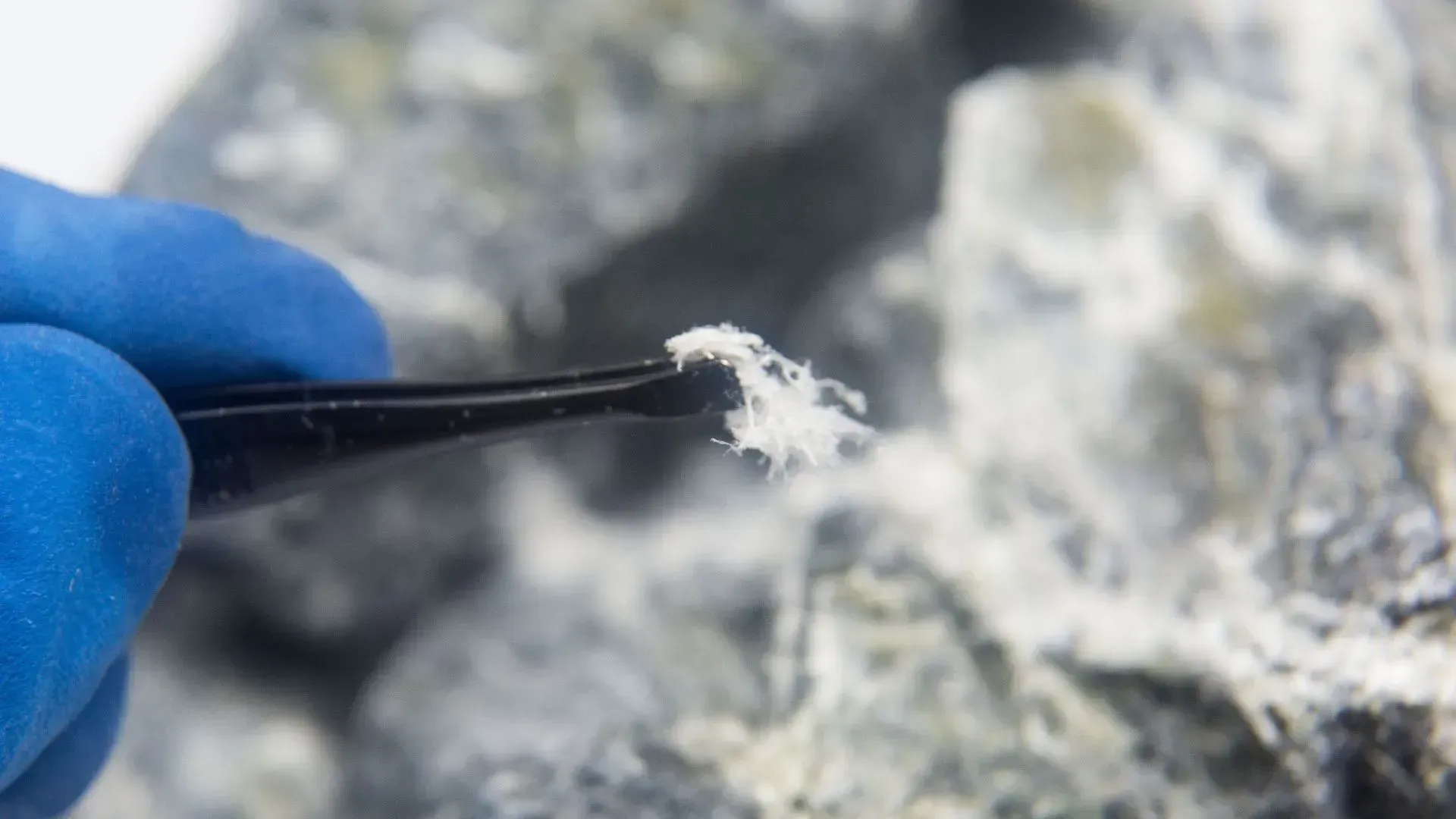
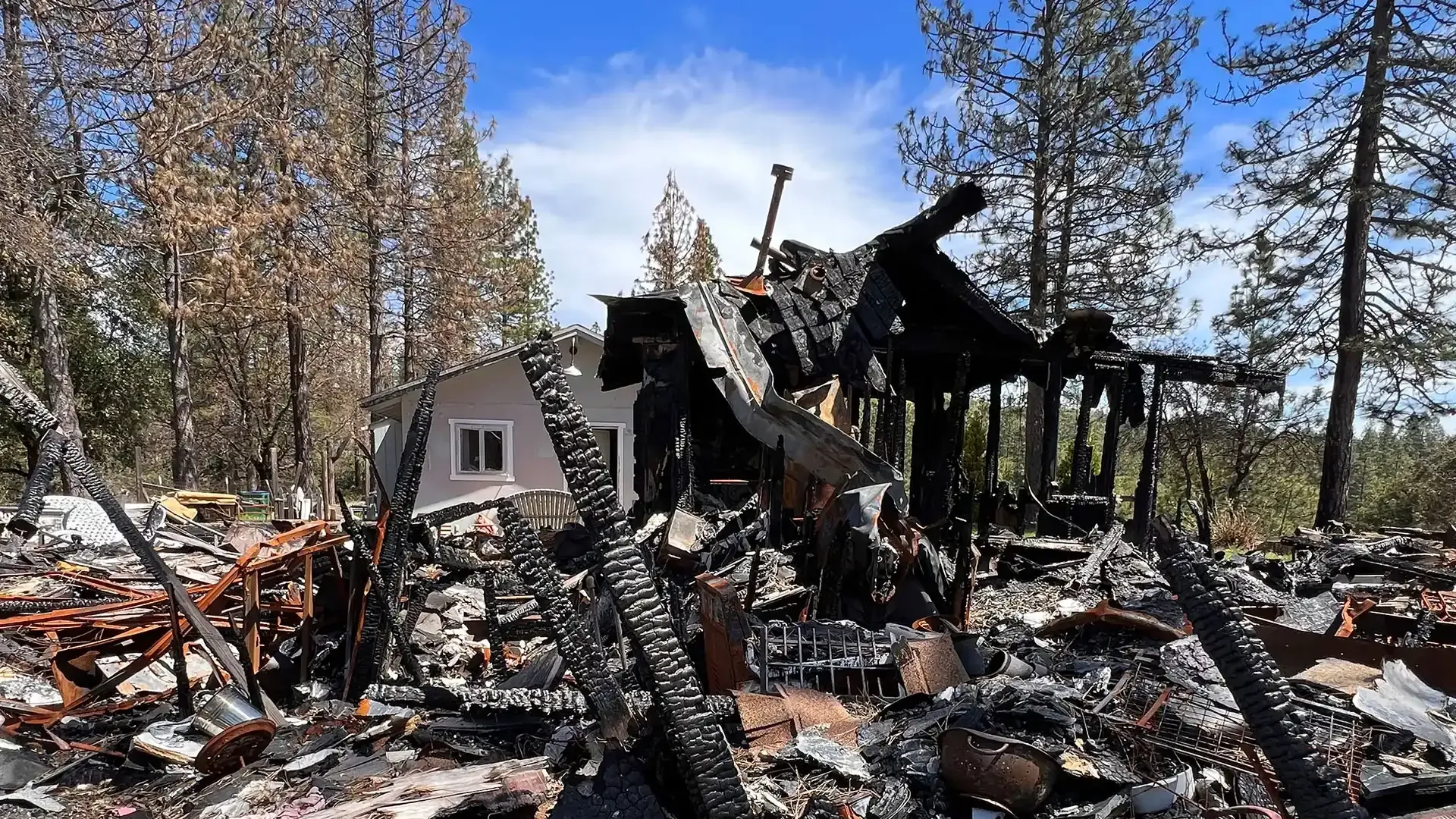
CONTACT INFO
Phone Number: 916 409 6879
OSHA-10 Certified Contractor
Licensed For Demolition In California
All Rights Reserved | Demo Patrol | Website Designed by Blue Crocus Solutions | Privacy Policy | TOS

